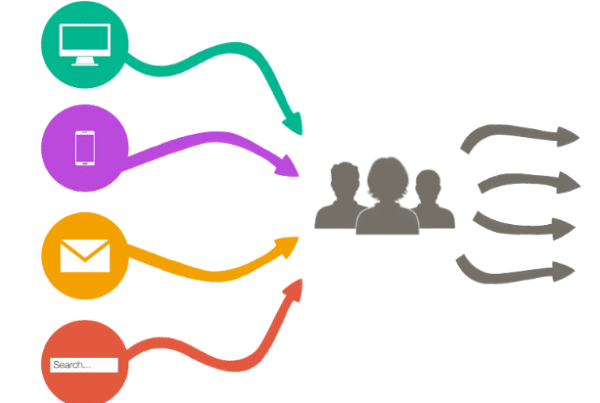More and more, growth hacking is being lumped into conversion rate optimization? What do I mean? The more and more research I do on growth hacking, and I do, because just like anyone else (or not,) I’m on the continued search of knowledge to learn from others and read as much as I can.
The issue I keep running into is that growth hacking has now been lumped into conversion rate optimization as the same thing. Everything I’ve been reading lately about growth hacking has been more about conversion rate optimization. To me, they are two very completely different things, which require two different skill sets.
Let’s start with the actual definition.
WHAT IS CONVERSION RATE OPTIMIZATION?
Conversion rate optimization (CRO) is the practice of increasing the percentage of users who perform a desired action on a website. Desired actions can include purchasing a product, clicking ‘add to cart’, signing up for a service, filling out a form, or clicking on a link.
WHAT IS GROWTH HACKING?
Growth hacking is an umbrella term for strategies focused solely on growth. … The goal of growth hacking strategies is generally to acquire as many users or customers as possible while spending as little as possible. The term “growth hacking†was coined by Sean Ellis, founder and CEO of GrowthHackers, in 2010.
UMMM…WHY ARE THESE BEING LUMPED TOGETHER?
Growth hacking is now a buzz word. Let’s be honest, at the end of the day, it’s just another word for marketing. But, this has a specific goal which is to acquire as many customers as possible without breaking the bank using a few focused strategies that can scale.
This is VERY different than conversion rate optimization where the goal is to increase the conversion of the visitor, not to grow the number of new customers.
RECOMMENDED READS:
- Conversion Rate Optimization Tips With Neil Patel
- The Holy Grail Of E-Commerce Conversion Rate Optimization Hacks
LET’S OUTLINE SOME EXAMPLES OF GROWTH HACKING / GROWTH MARKETING:
GROUPON
Groupon has done a great job at making its user base scale its marketing efforts.
Each of the four referral options works pretty much the same way. Each option allows you to refer Groupon to a friend for a potential $10 in Groupon Bucks.
- If you want to use the copy/paste referral link simply click on the blue button that says “GET LINK!†This will provide you a URL that you can embed on your website or send to friends.
- If you click on mail it, Groupon will populate an email with text encouraging your friend to use Groupon. You will need to insert the email address of those friends you want to send the referral suggestion to.
- If you click to share on Facebook or Twitter, Groupon will post a referral request on your social media page. It tells your friends on social media that you can earn Groupon credit if they sign up and buy a deal.
PAYPAL
While PayPal grew from its first-to-market idea of making payments easy online, it needed a way to scale. It did so with its referral program of giving customers free money by referring friends and family into the platform to use the service. This strategy, while it cost them approximately $60m, it paid incredible dividends and was an incredible success.
DROPBOX
Dropbox is another company known for creative growth hacks, which is why it’s listed in our roundup of growth hacking strategies. Dropbox gamified its onboarding process, offering existing users more free storage for linking their Dropbox account to Twitter and Facebook, and sharing information about Dropbox on those social sites. That was a free way to get new users and to grow exponentially.
AIRBNB
Craigslist growth hack —very early on, anyone who listed on Airbnb could cross-list on Craigslist with one click, Airbnb helped by filling out all Craigslists forms with a ‘bot. ‘ The hack required some technical gnarl to perform, but it was perfect for this early stage. The team also appeared to look for all listings of vacation properties being listed on Craigslist, and emailed the owners to list also on Airbnb. Read more.
Facebook created badges or profile widgets and made them embeddable so that the users could take them and post them on their websites and blogs. Of course this gave Facebook more visibility and better search rankings.
According to Forbes:
… these widgets served billions of impressions per month, which led to hundreds of millions of clicks and consequently millions of signups. By extending Facebook through the user base, Facebook was able to generate a massive number of sign ups.
As you see, growth hacking are actual strategies for growth, which is extremely different than optimizing for conversion rate optimization of turning the consumers into customers.


